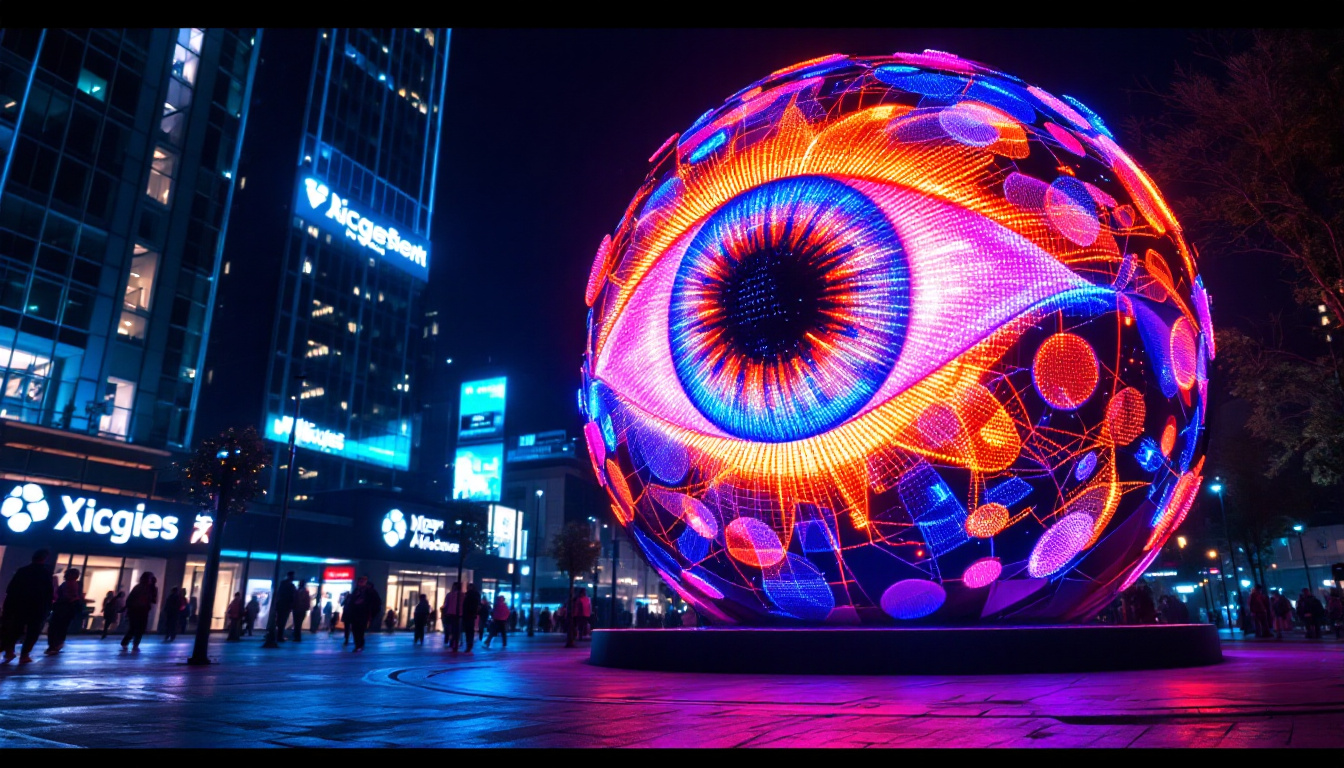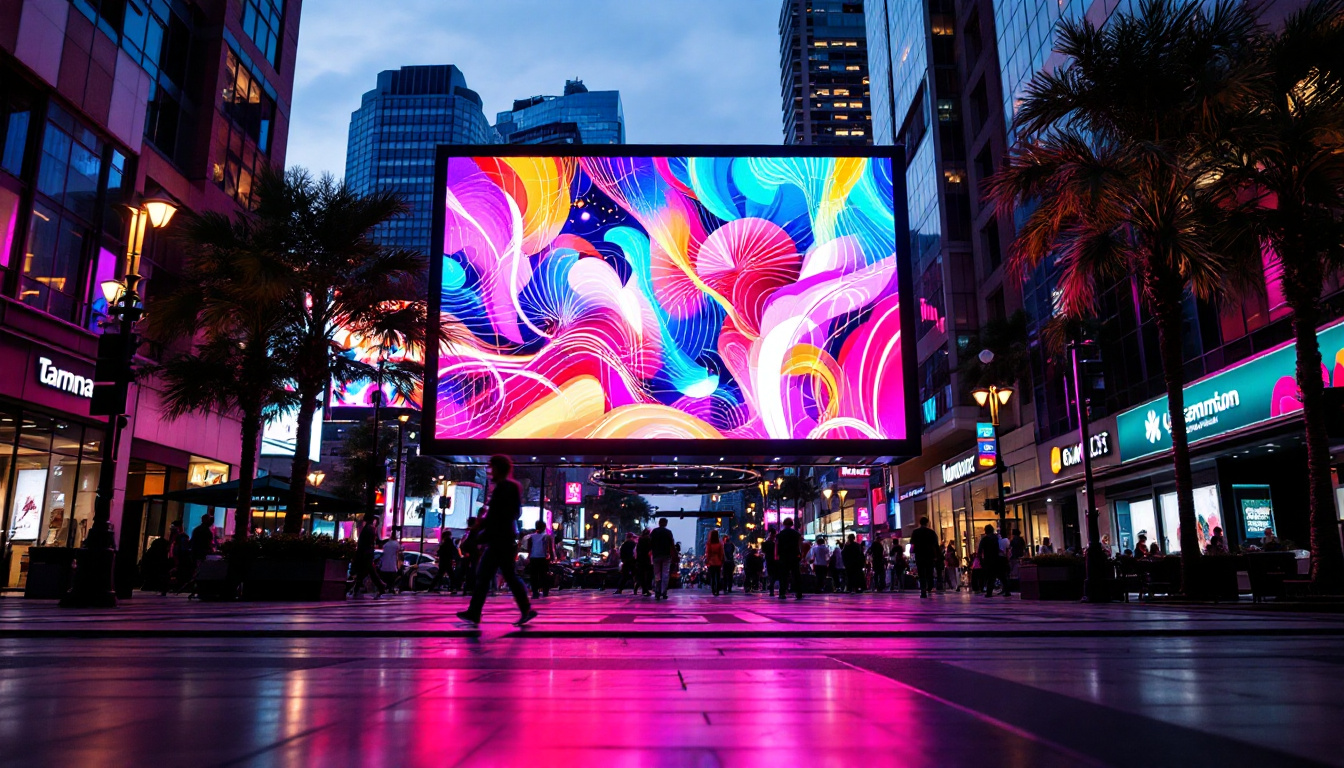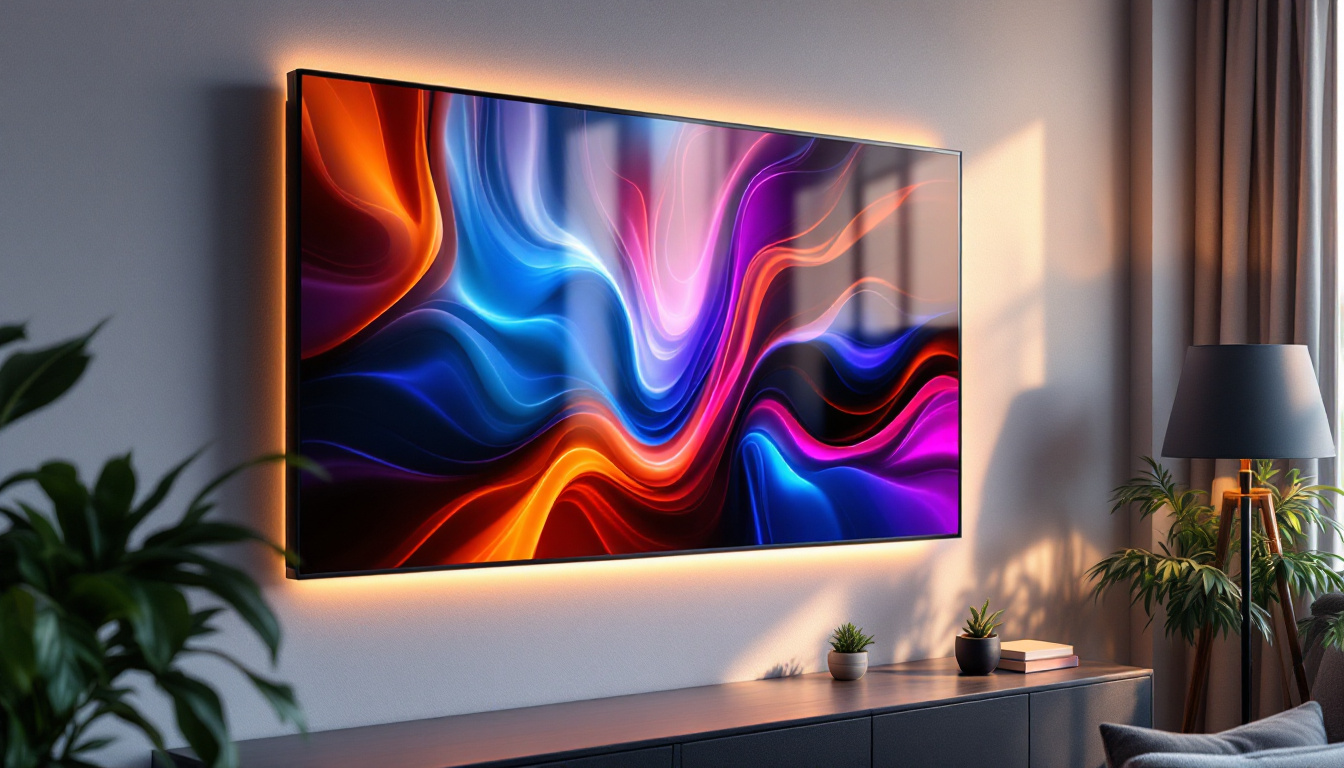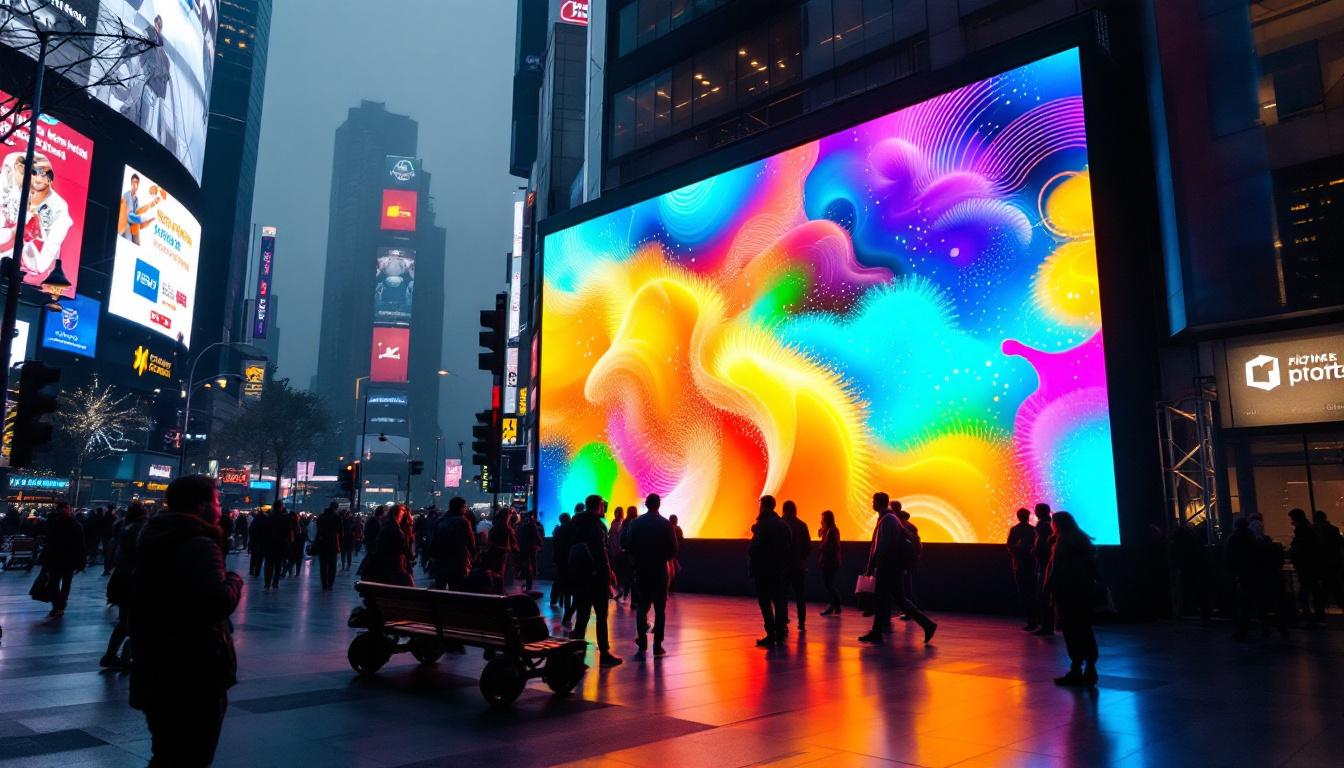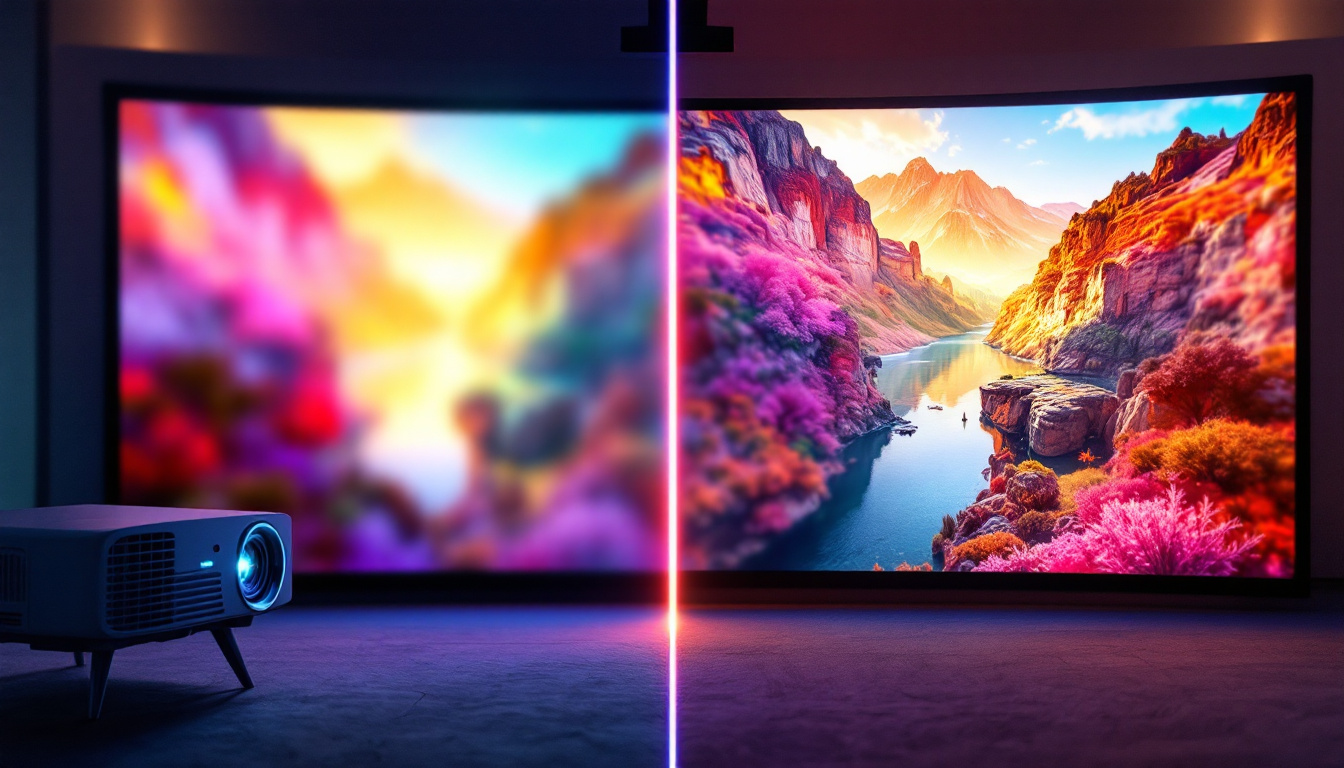The transparent OLED (Organic Light Emitting Diode) market is rapidly evolving, offering innovative solutions for various applications ranging from retail displays to automotive interfaces. As technology advances, the demand for displays that seamlessly integrate with their surroundings is on the rise. This article delves into the intricacies of transparent OLED technology, its market dynamics, and the potential it holds for the future.
Understanding Transparent OLED Technology
Transparent OLEDs are a unique type of display technology that allows light to pass through while still providing high-quality images. Unlike traditional displays, which can be bulky and opaque, transparent OLEDs offer a sleek and modern alternative, making them ideal for a variety of applications. This innovative technology is not just about aesthetics; it also represents a significant leap forward in how we interact with visual information in our environments.
How Transparent OLEDs Work
At the core of transparent OLED technology is the use of organic compounds that emit light when an electric current is applied. These compounds are layered between two electrodes, one of which is transparent. This configuration allows the display to emit vibrant colors while maintaining a level of transparency that enables viewers to see through the screen. The intricate design of these layers is crucial, as it determines both the quality of the image produced and the degree of transparency achieved.
The transparency of these displays can vary, typically ranging from 30% to 80%. This feature allows for innovative applications, such as interactive displays in retail environments or augmented reality interfaces in vehicles. The ability to blend digital content with the real world opens up a plethora of possibilities for designers and engineers alike. For instance, in automotive applications, transparent OLEDs can provide critical driving information while allowing drivers to maintain a clear view of the road ahead, enhancing both safety and convenience.
Key Advantages of Transparent OLEDs
Transparent OLEDs offer several advantages over traditional display technologies. One of the most significant benefits is their ability to create immersive experiences without obstructing the view of the environment. This characteristic is particularly valuable in retail settings, where brands can showcase products while still allowing customers to see the store layout. Moreover, this functionality can be leveraged in museums and exhibitions, where artifacts can be displayed alongside digital information, enriching the visitor experience without detracting from the physical exhibits.
Additionally, transparent OLEDs are energy-efficient, as they consume less power compared to conventional displays. This efficiency not only reduces operational costs but also aligns with the growing demand for sustainable technology solutions. Furthermore, the lightweight and thin design of transparent OLEDs makes them easier to integrate into various applications, from smart windows to wearable devices. As the technology continues to evolve, we can expect to see even more creative uses, such as in architecture, where buildings can incorporate transparent OLEDs into their facades, providing both functional displays and aesthetic appeal. The potential for integration into everyday life is vast, paving the way for a future where digital and physical worlds seamlessly coexist.
Market Dynamics and Trends
The transparent OLED market is witnessing significant growth, driven by advancements in technology and increasing demand across various sectors. As industries recognize the potential of transparent displays, investments and innovations are surging, fueling market expansion.
Current Market Landscape
As of 2023, the transparent OLED market is characterized by a diverse range of players, from established technology giants to emerging startups. These companies are actively developing new products and solutions to meet the growing demand. The retail sector, in particular, is a major driver of this growth, as brands seek to enhance customer engagement through interactive displays.
Moreover, the automotive industry is also exploring transparent OLED technology for applications such as heads-up displays and infotainment systems. As vehicles become increasingly connected and integrated with digital interfaces, the need for transparent displays that provide information without obstructing the driver’s view becomes paramount.
Future Growth Projections
Analysts predict that the transparent OLED market will continue to expand at a robust pace over the next several years. Factors contributing to this growth include ongoing technological advancements, decreasing production costs, and the increasing adoption of smart devices. As manufacturers refine their processes and enhance the performance of transparent OLEDs, the market is expected to attract even more investment.
Furthermore, the rise of smart cities and the Internet of Things (IoT) is likely to create new opportunities for transparent OLED applications. From smart signage to interactive public installations, the potential for innovation is vast, positioning transparent OLEDs as a key player in the future of display technology.
Applications of Transparent OLED Displays
The versatility of transparent OLED displays allows them to be utilized in a wide range of applications. From retail and advertising to automotive and architectural design, the possibilities are virtually limitless.
Retail and Advertising
In the retail sector, transparent OLEDs are revolutionizing the way brands engage with consumers. By integrating these displays into store windows or product showcases, retailers can create captivating experiences that draw customers in. For instance, a transparent OLED display can overlay product information or promotional content on top of physical merchandise, enhancing the shopping experience without detracting from the product itself.
This innovative approach not only attracts attention but also provides valuable information to consumers, helping them make informed purchasing decisions. As a result, many retailers are investing in transparent OLED technology to differentiate themselves in a competitive market.
Automotive Applications
The automotive industry is another sector poised to benefit significantly from transparent OLED technology. As vehicles become more technologically advanced, the integration of transparent displays offers exciting possibilities for enhancing driver and passenger experiences. For example, heads-up displays (HUDs) can project critical information directly onto the windshield, allowing drivers to access navigation, speed, and other data without taking their eyes off the road.
Additionally, transparent OLEDs can be used in vehicle interiors to create immersive infotainment systems that blend seamlessly with the car’s design. This integration not only enhances aesthetics but also improves functionality, making it easier for passengers to interact with digital content.
Architectural and Interior Design
Transparent OLEDs are also making waves in architectural and interior design. Architects and designers are exploring the use of these displays in smart windows, allowing buildings to adapt to changing light conditions while providing information and entertainment to occupants. This technology can transform traditional spaces into dynamic environments that respond to the needs of users.
Moreover, transparent OLEDs can be incorporated into furniture and fixtures, offering a modern touch to interior spaces. As the demand for smart homes and offices grows, the integration of transparent displays is likely to become a standard feature in contemporary design.
Challenges Facing the Transparent OLED Market
Despite the promising outlook for transparent OLED technology, several challenges must be addressed to ensure its widespread adoption. Understanding these obstacles is crucial for stakeholders looking to navigate the market effectively.
Technical Limitations
One of the primary challenges facing transparent OLEDs is their technical limitations. While the technology has advanced significantly, issues such as lower brightness levels and limited color accuracy compared to traditional displays still persist. These limitations can hinder the performance of transparent OLEDs in certain applications, particularly in bright environments where visibility is crucial.
Additionally, the manufacturing process for transparent OLEDs can be complex and costly. As a result, achieving economies of scale remains a challenge for many manufacturers. Continued research and development efforts are essential to overcome these technical hurdles and improve the overall performance of transparent OLED displays.
Market Competition
The transparent OLED market is becoming increasingly competitive, with numerous players vying for market share. This competition can lead to price wars, which may impact profit margins for manufacturers. To succeed in this dynamic landscape, companies must differentiate themselves through innovation, quality, and customer service.
Furthermore, as other display technologies, such as microLED and LCD, continue to evolve, transparent OLEDs may face additional competition. Staying ahead of the curve requires constant innovation and a keen understanding of market trends.
The Future of Transparent OLED Displays
The future of transparent OLED displays is bright, with numerous opportunities on the horizon. As technology continues to advance, the potential applications for transparent OLEDs will expand, leading to new and exciting use cases across various industries.
Innovation and Research
Ongoing research and development efforts are critical to unlocking the full potential of transparent OLED technology. Innovations in materials science, manufacturing processes, and design will play a pivotal role in enhancing the performance and affordability of transparent displays. As manufacturers invest in R&D, new breakthroughs are likely to emerge, paving the way for next-generation transparent OLEDs.
Moreover, collaborations between technology companies, research institutions, and design firms can foster innovation and accelerate the development of new applications. By working together, stakeholders can leverage their expertise to create solutions that meet the evolving needs of consumers and industries.
Integration with Emerging Technologies
The integration of transparent OLEDs with emerging technologies, such as augmented reality (AR) and virtual reality (VR), presents exciting possibilities for the future. As AR and VR continue to gain traction, the demand for displays that can seamlessly blend digital content with the real world will grow. Transparent OLEDs are well-positioned to meet this demand, offering immersive experiences that enhance user engagement.
Additionally, the rise of smart cities and the Internet of Things (IoT) will create new opportunities for transparent OLED applications. As urban environments become more connected, the need for interactive displays that provide real-time information will increase, further driving the adoption of transparent OLED technology.
Conclusion
The transparent OLED market is poised for significant growth, driven by advancements in technology and increasing demand across various sectors. As industries explore the potential of transparent displays, the possibilities for innovation are vast. While challenges remain, ongoing research and development efforts, coupled with the integration of emerging technologies, will pave the way for the future of transparent OLEDs.
With their unique ability to blend digital content with the real world, transparent OLED displays are set to transform industries ranging from retail to automotive and beyond. As the market continues to evolve, stakeholders must remain agile, embracing innovation and collaboration to harness the full potential of this groundbreaking technology.
Discover the Future of Visual Engagement with LumenMatrix
Ready to elevate your visual communication and create unforgettable experiences? LumenMatrix is at the forefront of LED display innovation, offering a diverse range of solutions from Indoor and Outdoor LED Walls to specialized displays for vehicles, sports, and custom applications. Our transparent OLED displays are designed to merge seamlessly with your environment, captivating audiences and enhancing brand visibility. Don’t miss the opportunity to transform your space. Check out LumenMatrix LED Display Solutions today and step into the future of digital signage.








